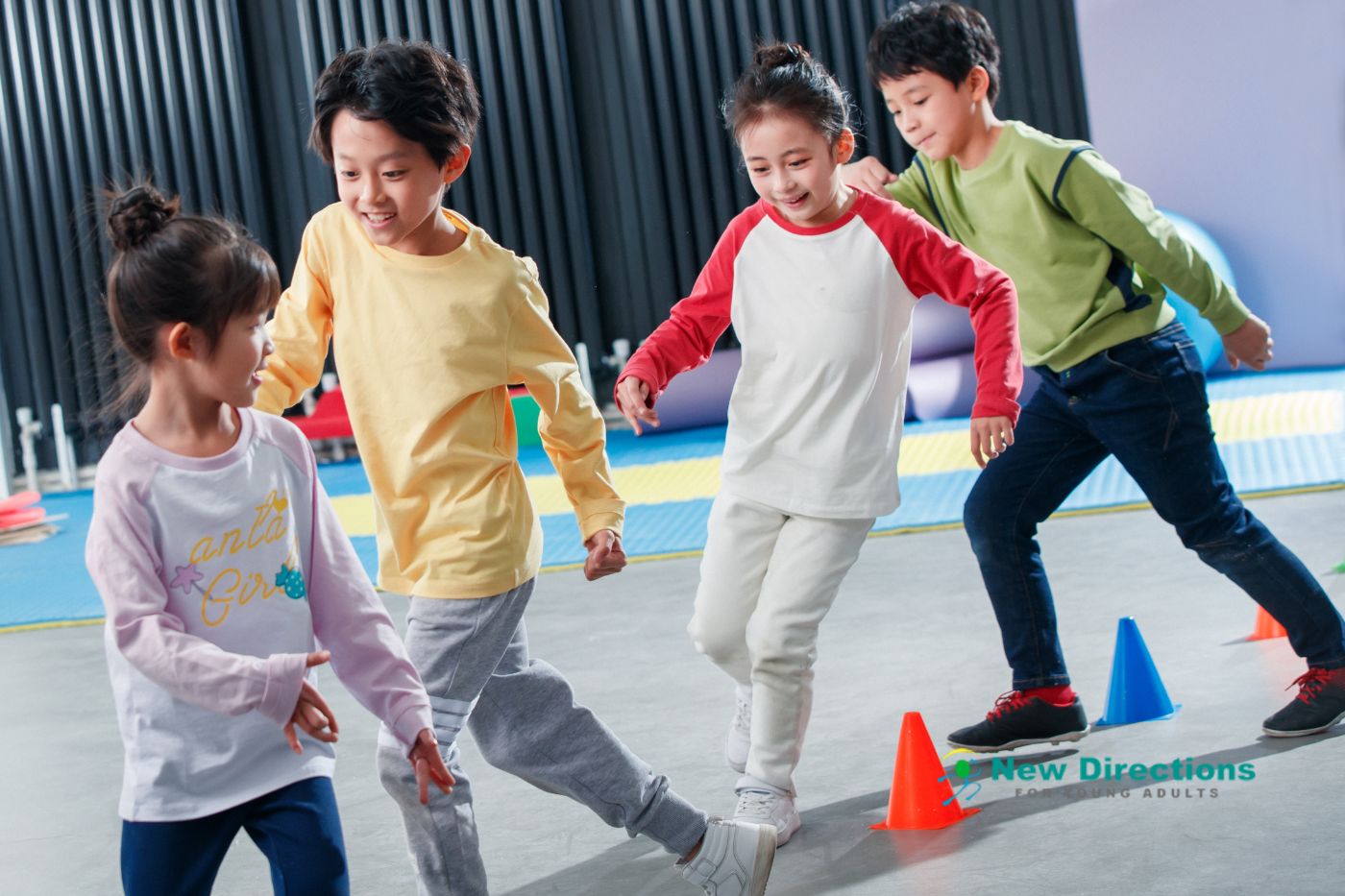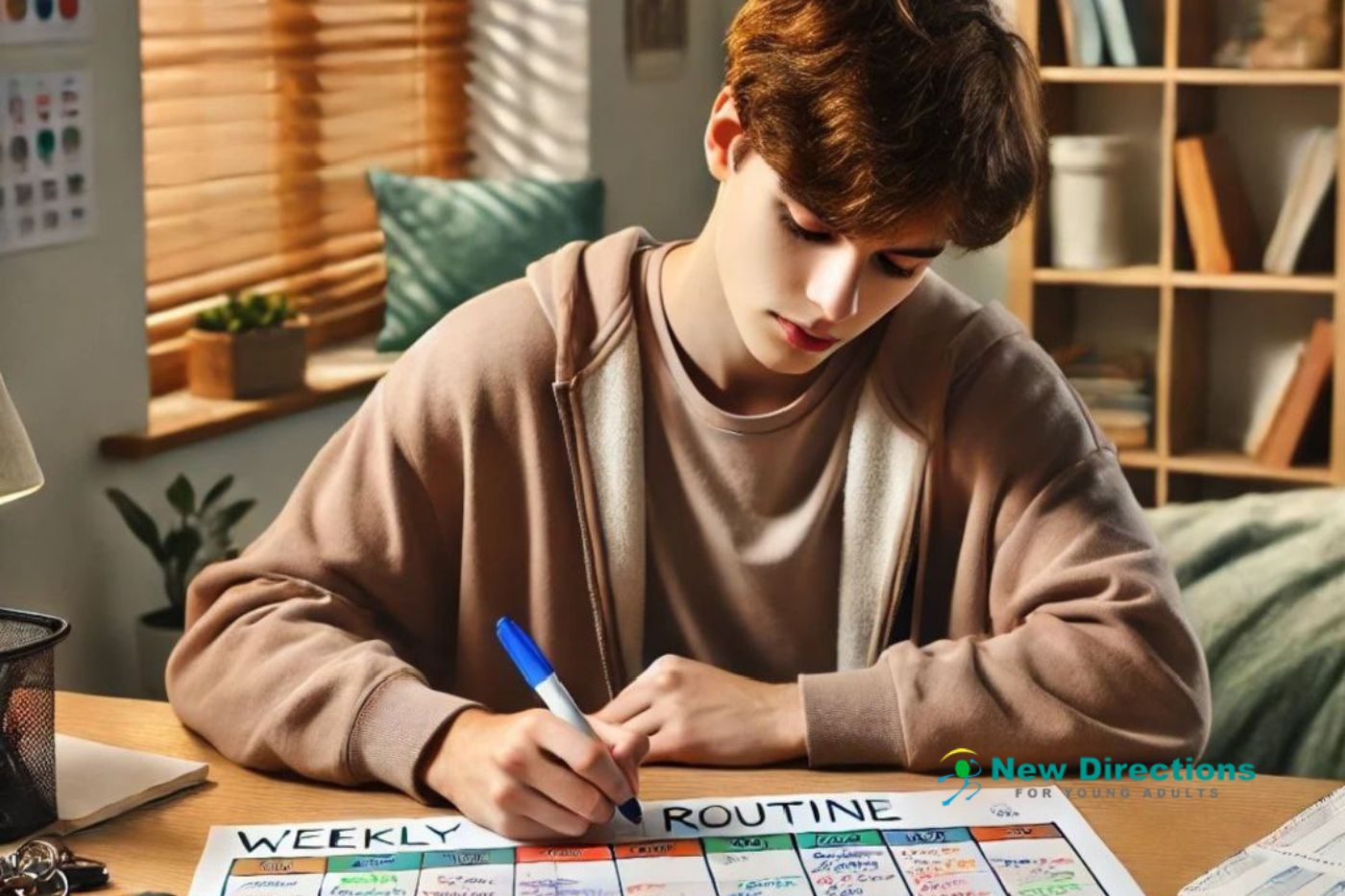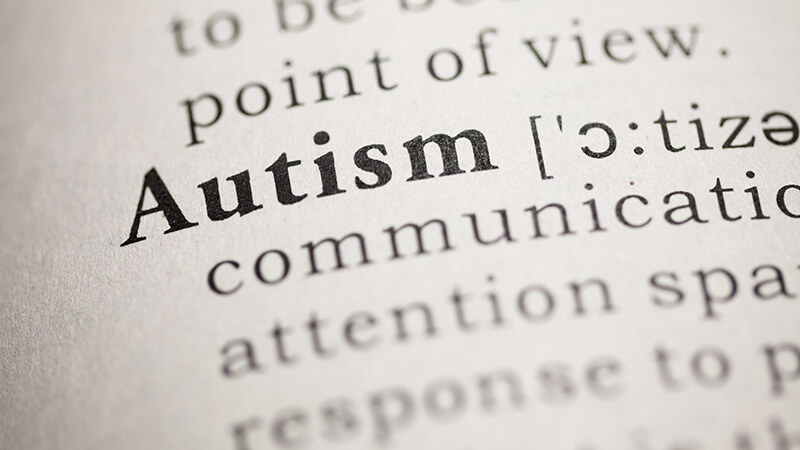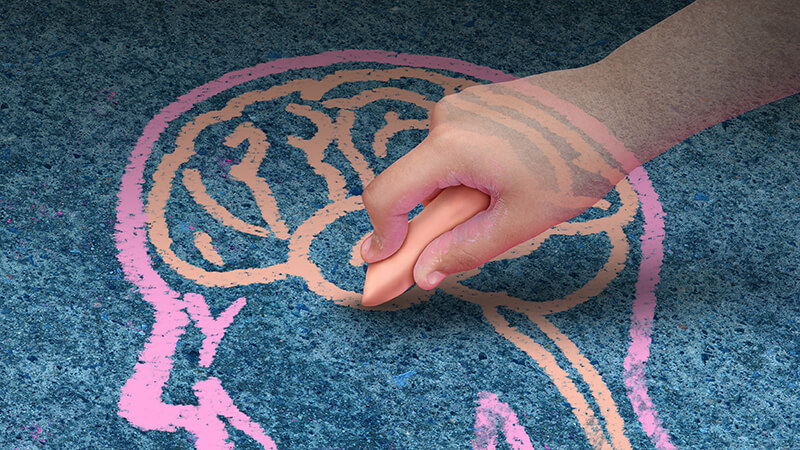Watching your child with autism spectrum disorder (ASD) grow up can be thrilling and a bit scary. Moving from high school to college, work, or further education is a big step. It needs careful planning and support. But, with the right help, your ASD young adult can learn the skills for living on their own.
Every year, about 48,500 teens with autism turn 18. This change from high school to the adult world can be tough for them and their families. By understanding your teen’s strengths, interests, and talents, you can support them well. This article offers tips and strategies to ease your ASD young adult’s move to independent living.
Key Takeaways
- Fostering independence and self-reliance skills is crucial for young adults with ASD as they prepare for adulthood.
- Developing independent living skills, such as self-care, money management, and household chores, can promote autonomy and confidence.
- Transitional support and resources are available to help ASD young adults navigate the journey from high school to post-secondary education, employment, or community living.
- Collaboration between parents, educators, and service providers is essential to ensure a seamless transition and the development of essential life skills.
- Exploring diverse post-secondary options, including college, vocational programs, and internships, can help ASD young adults find the right path to independence.
Understanding the Importance of Independent Living Skills
Many people aim to live on their own as they grow older. This is true for those with intellectual disabilities, autism spectrum disorder, and other conditions. Learning a lot of independent living skills, daily living skills, self-care skills, community participation skills, personal finance skills, and home living skills is key to living independently.
What are Independent Living Skills?
Independent living skills are the abilities needed to handle daily life, live alone, and be part of the community. These skills include:
- Self-care activities (e.g., grooming, dressing, hygiene)
- Cooking and food preparation
- Money management and personal finance
- Shopping and running errands
- Organizing and maintaining a household
- Using public transportation or other forms of mobility
- Engaging in social interactions and community involvement
Getting good at these independent living skills boosts the independence and self-reliance of people with disabilities. It also improves their life quality. By learning these skills, they can handle the challenges of adulthood and live more independently in their communities.
Assessing Your Child’s Current Abilities

Getting your child or young adult with autism ready for living on their own starts with knowing their skills and strengths. It’s important to see what they’re good at and what they need help with. By looking at their skills, you can make a plan to help them grow into adulthood.
The Community-Based Skills Assessment is a great way to check independent living skills. It shows you and your child what they’re doing well and what they need to work on. This assessment looks at things like taking care of themselves, managing a home, making friends, and getting involved in the community. Knowing what your child can do helps you make a plan just for them.
- Assess your child’s strengths and weaknesses in independent living skills
- Identify their interests, values, and primary needs
- Use tools like the Community-Based Skills Assessment to guide the evaluation process
- Develop a personalized plan to build essential life skills for independent living
Checking your child’s skills is a key step in helping them live independently. This helps you support their growth and lead them to a happy, independent life.
Developing Essential Life Skills
As your child with autism spectrum disorder (ASD) gets ready for independent living, it’s key to focus on essential life skills. Teaching them self-care and hygiene skills will boost their ability to live on their own. Visual supports like checklists and schedules help give structure and guidance in learning these vital skills.
Self-Care and Hygiene Skills
Skills like showering, brushing teeth, and personal grooming are key for living independently. A study shows that people with ASD do better with specific support to learn these skills. Experts like occupational therapists use ABA techniques to make complex tasks simpler.
Skills like organizing, planning, and managing time are also crucial for independent living. Tools like checklists and schedules help people with autism complete tasks and understand social cues.
Early intervention and regular practice are vital for autistic individuals. They help develop important skills for daily life. Moving from school to adulthood needs extra support for a smooth transition into independent living.
Building Social and Communication Skills
Teaching your child with autism how to talk and connect with others is key for living on their own. Using tools like picture exchange communication systems (PECS) and speech output devices helps them share what they want and feel. Also, learning how to talk and keep a conversation going makes them better at social situations.
Social skills are vital for living independently. They help people make friends, join in community events, and speak up for themselves. By improving communication skills, your child can share their thoughts, talk to others, and take part in their life. This boosts their confidence, self-advocacy, and happiness as they grow into adults.
Tools like PECS and speech output devices are great for helping your child communicate. They make it easier to talk about needs and wants. They also help with social skills, like starting conversations and listening well. Learning these strategies helps your child do well in social settings.
Focus on social and communication skills to help your child be more independent. This approach improves their life quality and supports them as they become adults. It’s a way to help them succeed in daily life, social circles, and community activities.
How to Help a Child Transition into Independent Living
Helping a child with autism spectrum disorder (ASD) move to independent living needs a detailed plan. As a parent or caregiver, you’re key in helping your child become independent. Here are some important steps to follow:
- Teach Life Skills: Give your child skills like self-care, managing a home, and understanding money. Let them practice these skills in real-life situations with the help of visual aids and set routines.
- Foster Independence: Let your child make their own choices, plan their time, and take on more tasks. This builds their confidence and ability to speak up for themselves, important for living on their own.
- Provide Real-World Experience: Get your child involved in internships, volunteering, or part-time jobs. This gives them hands-on experience and a chance to use their skills in real situations.
- Develop Social and Communication Skills: Help your child improve their social and communication skills. These are key for living independently and making strong relationships.
- Create a Comprehensive Plan: Work with your child, teachers, and experts to make a detailed plan for their transition. This plan should cover their specific needs and goals for independent living.
By using these strategies and offering ongoing support, you can make the transition smoother for your child with ASD. Remember, becoming independent is a step-by-step process. Celebrating small wins can really help your child feel more confident and motivated.
With the right support and focus on independence, your child with ASD can successfully move to independent living and do well in adulthood.
Creating Routines and Fostering Independence
Creating daily routines helps your child live independently. By showing them your own routines and using checklists, they learn to follow schedules and do tasks alone. This builds independence, lowers anxiety, and makes the move to adulthood smoother.

Letting your child make choices is great for independence. Studies show giving them two or three options helps them feel in control. Also, giving them simple chores teaches responsibility and teamwork.
Encourage your child to play on their own with activities like coloring or puzzles. These activities improve focus, make them feel proud, and boost problem-solving skills. Using “P-R-I-D-E” skills (Praise, Reflect, Imitate, Describe, Enthusiastic) makes these activities even better.
Getting to independence is tough. You might face power struggles with your child. But with patience and focus on routines, you can help them do it.
Exploring Post-Secondary Education and Employment Options
As your child with autism spectrum disorder (ASD) moves into adulthood, it’s key to look into various post-secondary education and job options. These include traditional college, cooperative education for on-the-job training, and special programs for those with developmental disabilities. Vocational or trade schools are also worth considering.
Looking into these options can help you and your child find the right path. It’s important to work with your child’s school and local services. Together, you can make a detailed plan that meets their needs in academics, social skills, and living independently.
When thinking about post-secondary choices for your child with ASD, consider these points:
- Vocational training programs that offer hands-on skills
- Cooperative education programs that mix classroom learning with real work
- Supported employment services to help find and keep meaningful jobs
- Starting transition planning early, from age 14, for a smooth move into adulthood
By doing your homework and planning, you can make sure your child’s transition is smooth. This will lead to a happy and successful future.
How New Direction for Young Adults Can Help You
Starting independent living can be tough for young adults with autism spectrum disorder (ASD). But, groups like New Direction for Young Adults offer the help and resources families need. They provide services that can greatly improve your child’s independence and success.
New Direction for Young Adults knows the special challenges young adults with ASD face. They offer services like teaching life skills, helping with education and jobs, and connecting families with local resources.
They help your child learn important life skills, like handling money, shopping for groceries, cooking, and keeping clean. They also help families improve social and communication skills. This builds independence and confidence.
New Direction for Young Adults also helps with education and jobs. They guide you through finding the right college programs, vocational training, and jobs that match your child’s interests and skills.
Working with New Direction for Young Adults means getting access to a wide network of support. This includes mental health services, tech help, and other local groups that aid in independent living.
Experts at New Direction for Young Adults make families feel ready and confident. They help young adults with ASD become more independent and reach their goals. Start your child’s journey to a brighter future with their services and resources.
Conclusion
Helping a child with autism spectrum disorder (ASD) move to independent living needs a detailed plan. Start by checking your child’s skills and abilities. Then, work on building life skills, improving social and communication skills, and looking into post-secondary options.
This way, you can prepare your ASD young adult for a bright and fulfilling future. With patience and the right support, kids with autism can gain the skills and confidence for independent living. By believing in your child’s potential and offering the right guidance and resources, they can face this big change.
The path to supporting ASD young adults in moving to independent living is ongoing. By focusing on life skills, making a detailed transition plan, and understanding your child’s needs, you can help them succeed in their new life.





